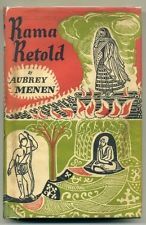(My column in Mint Lounge, August 26 2017)

It is that time of the year when we indulge our national predilection for taking offence, banning books and hounding writers. We have Hansda Sowvendra Shekhar, for example, whose collection, The Adivasi Will Not Dance, is deemed “pornographic” for portraying an impoverished tribal woman who, for 50 rupees and a pakoda, transacts sex with a policeman. That Shekhar reflects the reality of many marginalized women is irrelevant—the real danger to women’s honour in 2017 still lies in the refractory pages of a book, and the only recourse is to order an immediate, uncompromising ban.
When in 1955 independent India first decided to outlaw an English novel, its author was only a little anguished. As he remarked later, with an indifference designed to inflame the sanctimonious, “Efforts should be made to lift all bans on all books.” But those efforts wouldn’t come from him: “My job in life,” he declared, “is to write books, not chew the cud over them.” Aubrey Menen lived in Italy and while Indians were deprived of his Rama Retold, the book became a sensation abroad. Success allowed him to parade his disdain for incensed elders at home, though in private he did ask Jawaharlal Nehru why in a democracy any book should be banned at all. The prime minister was, it is said, apologetic, but felt that certain creative leaps in Menen’s tale came “a little too early for its time.”
“He was afraid of being criticized,” Menen recalled, and the book’s opening indicates why. “This is the story of Rama,” begins the Irish-Malayalee’s retelling, “a prince of India who lived his life according to the best advice. He reverenced his intellectual betters…and did what they told him to do. He took his morals from the best moralists, and his politics from the most experienced politicians. As a result he was ruined, exiled, and disinherited: his wife was stolen from him and when he got her back, he very nearly had to burn her alive from the highest of motives. In the teeth of the soundest and most reliable guidance from his moral and mental superiors, he finally recovered his country, his throne, and his common sense. He lived more than two thousand five hundred years ago but everybody will recognize his experiences.” Wry, revealing, and pointed, Menen’s pen knew no sacred cows.
Menen’s pronounced irreverence often invited trouble, but in 1955 the charge against him was of tarnishing a legendary woman’s equally legendary honour. For he had created a Sita who takes unorthodox decisions in the interests of survival. She is, like in traditional versions, dedicated to Ram, though sometimes she does suffer a little fatigue from all the devotion. “It seems that we are going to renounce the world,” she informs Laxman on being told of their exile. “When?” he asks. “Tomorrow morning,” she responds distractedly. On encountering Valmiki (whose idea of saying grace is to seek good pumpkins from the Almighty), she is told that he is a poet. “Very well,” says Sita, “if he starts talking poetry I shall get up and leave the room”—a wise policy for all women who endure the verbal flatulence typical of males of our species.
What was scandalous about Menen’s Sita, however, was her attitude towards Ravan. They meet, and he falls in love with her. While Ram is preoccupied with contemplating “tremendous questions about life” as Sita cooks and cleans, Ravan is a simpler, oddly refreshing contrast who actually talks to her. Though she is flattered by Ravan’s attention, she is not interested. But when the Lankan king attacks them after a brawl with Laxman, and it is clear that they cannot win, Sita walks up and agrees to go with Ravan if he ceases hostilities. It is against honour, but she saves everyone’s lives. All this, predictably, shocked Nehru’s generation—a Sita who remembers Ravan as “gentle with women”. Naturally, more correct Ramayan scholars like C. Rajagopalachari dismissed Menen’s audacity as “pure nonsense”, while others demanded a ban.
Menen reconciled the matter of Sita’s chastity with her uncomfortably long stay near Ravan by simply not bothering to reconcile it. Other Ramayan poets have struggled somewhat. Tulsidas addresses the issue by introducing gods who carry the “real” Sita away, replacing her with an illusion before Ravan abducts her—that way, Sita’s chastity is never under question at all. In another version, Ravan suffers from a curse that prevents him from coercing an unwilling woman, indirectly protecting Sita in captivity. In any case, the public had to be convinced, and Menen stayed true to the story of trial by fire—except that his fire was a magician’s trick (“Egyptian Fire”) orchestrated with Ram’s connivance. And soon, Sita appears unscathed, having completed the charade. “I hope you were not frightened,” asks Ram. “There was more smoke than I expected,” confesses Sita. All this while they are sipping sherbet in what was once Ravan’s palace.
There is much in Rama Retold that is provocative, just as there is much food for thought—the choice would have been the reader’s if one were actually allowed to read it. At the end of the day, Menen’s intention was to tap into India’s long-standing tradition of scepticism, eschewing overblown moralizing. A fine point if it didn’t today entail more bans, burning effigies, and mobs of internet warriors who uphold antiquated fallacies with furious clicks of the mouse—at least for those writers who can’t go abroad and must continue in this ancient land of timeless glory, where Ram is always infallible, Sita the emblem of monochrome virtue, and our elders gatekeepers of what is and is not in the interests of true honour.